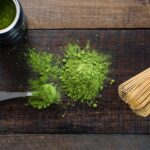Oak provides a stylish and durable floor surface which can be used in all types of homes and whereas historically it has often been the rich family’s option, modern industrial advances mean it is now a much more affordable choice for your home.
Contents
The varied uses of Oak through history
Oak has always been renowned for its strength and durability, but historically it has not been used solely as a floor surface. In the 9th and 10th centuries Viking longships were often built using oak planking, and it continued to be used in the construction of European military boats until the 19th century. But Oak is a versatile material. Not only has it been used in shipbuilding, but also in the manufacture of interior panelling, furniture, musical instruments, and barrels used to age various alcoholic drinks.
Wooden flooring through the ages
Wooden flooring which nowadays is highly prized emerged from relatively humble beginnings. The earliest uses of wood as a flooring material occurred in the 15th and 16th Centuries. Constructing wooden floors at this time was a laborious process as the timber had to be split, sawn and finished by hand.
Creating a level and functional floor was a challenge as planks were often of varied widths and thicknesses. By the early 17th Century most European homes still had dirt floors, or stone floors if the owners could afford them. Oak flooring was usually only used on upper floors by extremely wealthy homeowners.
The introduction of technology
The Industrial Revolution saw the advent of woodworking machinery, but during the Victorian age, timber production accelerated rapidly. Uniform-sized planks ideal for flooring and requiring much less labour were finally made available. These technological advances made it much easier and quicker to produce a finished level floor. Soon after this tongue-and-groove boards were developed to allow the construction of the beautifully finished floors we can see today.
Modern engineered hardwood flooring
The most recent developments in modern engineered oak flooring combine a layer of hardwood with layers of other materials, fused to look like hardwood but at a fraction of the cost. This fusion increases a board’s durability and stability which enable it to be utilised in more varied environments such as in a less well-ventilated cellar.
Engineered hardwood clearly has certain advantages over solid hardwood without diminishing a floor’s aesthetic beauty. Nowadays there are many options for wooden flooring, with materials being sourced from around the World. Oak flooring is widely recognised for adding character to any property, not only because of its beauty but also due to its durability. Both solid oak and engineered oak flooring are available in a range of finishes and styles to suit all your flooring needs.




